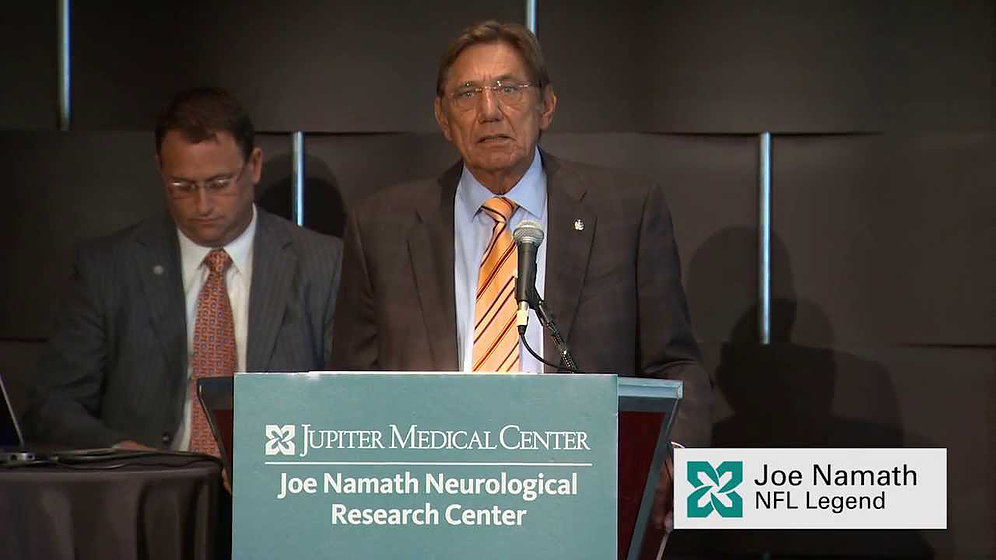
Hyperbaric Oxygen Therapy is a powerful healing tool. It’s too bad it is not at the forfront of healing in the mainstream medical community or healthcare coverage. Thank you Joe Namath for bringing more attentions and the FDA in to action!
Copyright 2014 The Palm Beach Newspapers, Inc.
All Rights Reserved
Palm Beach Post (Florida)
For a while, former NFL star quarterback Joe Namath didn’t think there was anything wrong with his brain.
But when former NFL linebacker Junior Seau committed suicide in 2012, Namath wanted to check his own health.
An autopsy revealed Seau had a deteriorating brain disease found in athletes and others who experience repetitive trauma to the head.
Brain scans and cognitive tests showed Namath, who said he had at least five concussions playing football, suffered from traumatic brain injury (TBI), particularly on the left side, where he received the most impact as a right-handed quarterback.
After 40 sessions of “bathing” Namath’s brain in pure oxygen, Dr. Lee Fox of Jupiter Medical Center said the areas that had appeared dark in scans began to show new neurological activity.
“The whole area of the brain just came back to life,” Fox said. “He was feeling better. He was finding the right words.”
The former New York Jets legend was the Medical Center’s first patient to use the hyperbaric oxygen chamber to see if blood flow could be restored to injured areas of the brain.
Namath’s recovery led to the start of the Joe Namath Neurological Research Center, which was launched Tuesday at Jupiter Medical Center.
At the center, researchers study the effectiveness of oxygen baths, or hyperbaric oxygen therapy, for treating TBI, which occurs when brain cells can’t get enough oxygen to produce new cells.
Those who’ve experienced sports-related concussions, car accidents, strokes or combat injuries can participate in the clinical trial in which doctors feed high volumes of oxygen into the brain to awaken dormant brain cells.
RELATED: Test Detects Easily Overlooked Concussion Signs
To qualify for the study, the person’s brain injury must be from at least one year ago, because TBI symptoms, such as confusion, slowed response, and memory impairment, don’t usually immediately show.
“The initial decline is really hard to read,” Fox said. “They don’t remember what it’s like to feel good until you actually treat them.”
It’s been a year since Namath, 71, had his last oxygen treatment and brain scans show the improvements remain. Namath said his thinking is much clearer and he remembers events with more clarity.
“One of the really great results is that my sleep has improved,” said Namath, a Tequesta resident . “I sleep more soundly and have vivid dreams. I have more energy and strength.”
Based on Namath’s experience, the Food and Drug Administration approved the launch of the clinical trial to test the oxygen treatment on 100 patients.
If results continue to show progress, they will apply to expand their research to 1,000 patients.
“Once we have that, we hope that we can treat people through Medicare,” said Dr. Barry Miskin, medical director of the Wound and Hyperbaric Oxygen Program. “We want them to take a leap of faith and believe that this will work.”
The NFL recently reported as many as a third of players can be expected to show brain injury.
Concussions and other types of play-related traumatic brain injuries among football players are believed to be major causes of suicide and other symptoms such as depression and memory loss:
A recent autopsy for Kansas City Chiefs linebacker Jovan Belcher found signs chronic traumatic encephalopathy (CTE), a long-term effect of TBI. Belcher fatally shot his 22-year-old girlfriend, Kasandra Perkins, and killed himself on Dec. 1, 2012.
Andre Waters, who played football at Pahokee High School and as a star safety with the Philadelphia Eagles and Arizona Cardinals from 1984-1995, committed suicide in his Tampa home in 2006. Bennet Omalu, the doctor who studied Waters’ brain, said the damage he discovered was consistent with that of 80- to 90-year-olds suffering from dementia.
Boston University researchers discovered that the suicide of former Chicago Bears star Dave Duerson may have been a result of CTE.
An autopsy on former Atlanta Falcons safety Ray Easterling, who killed himself in 2012, showed signs of CTE.

Recent Comments